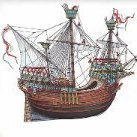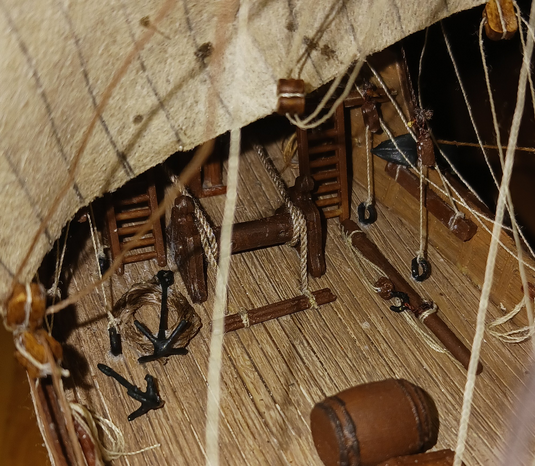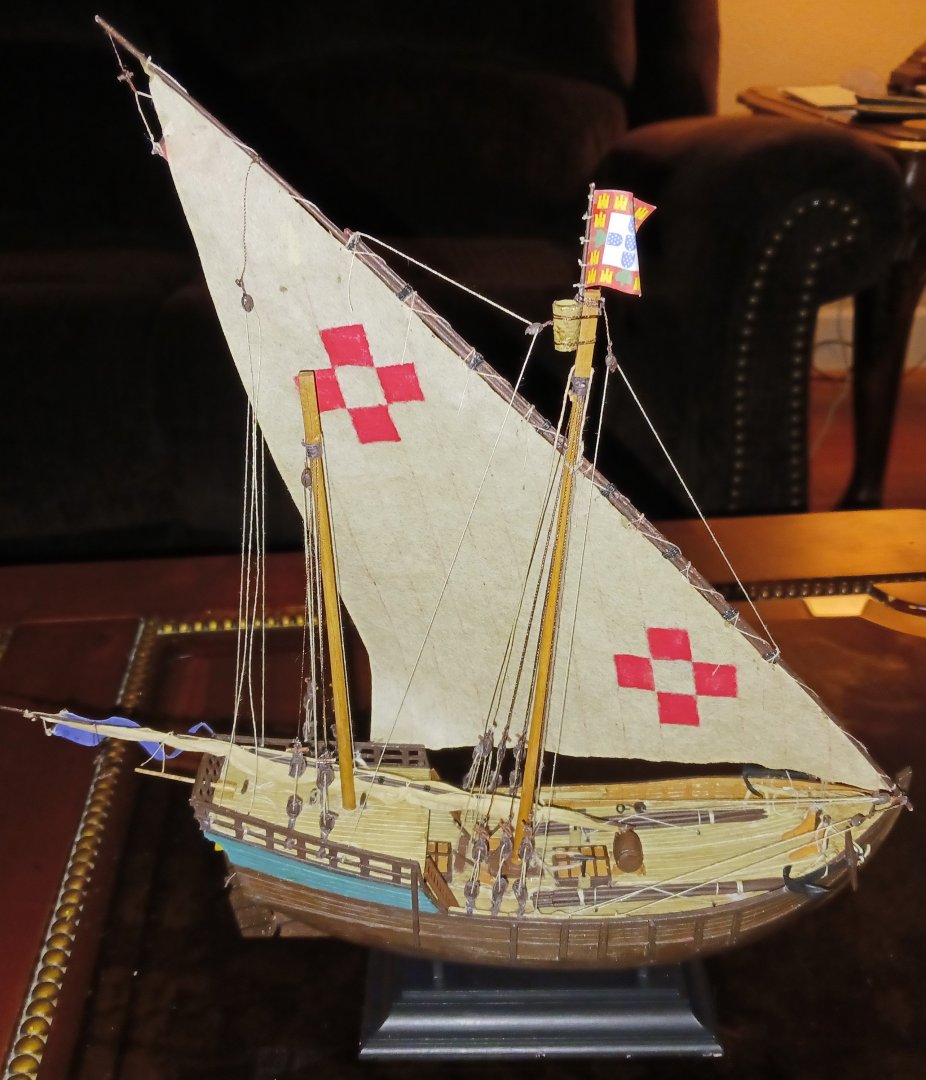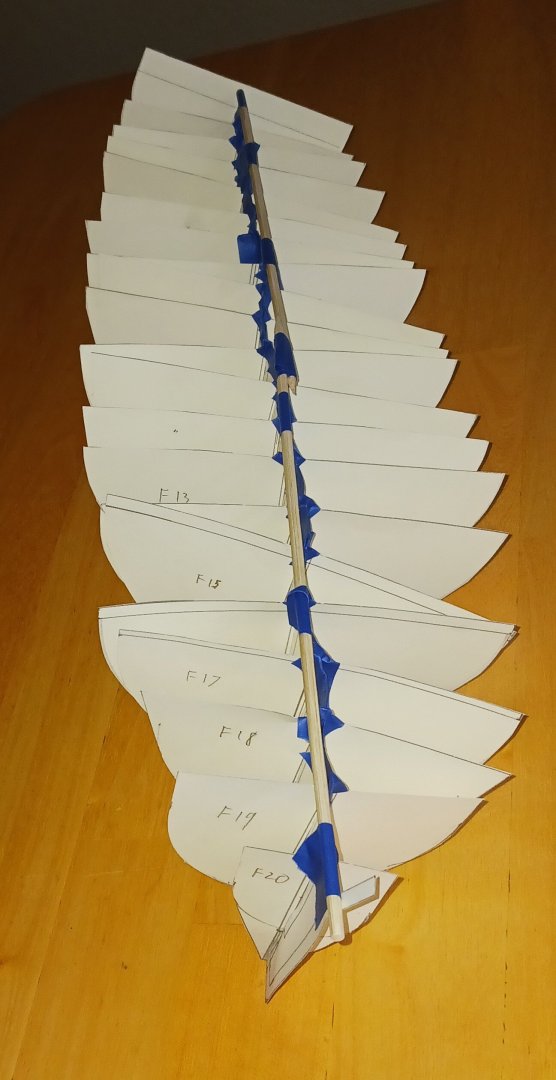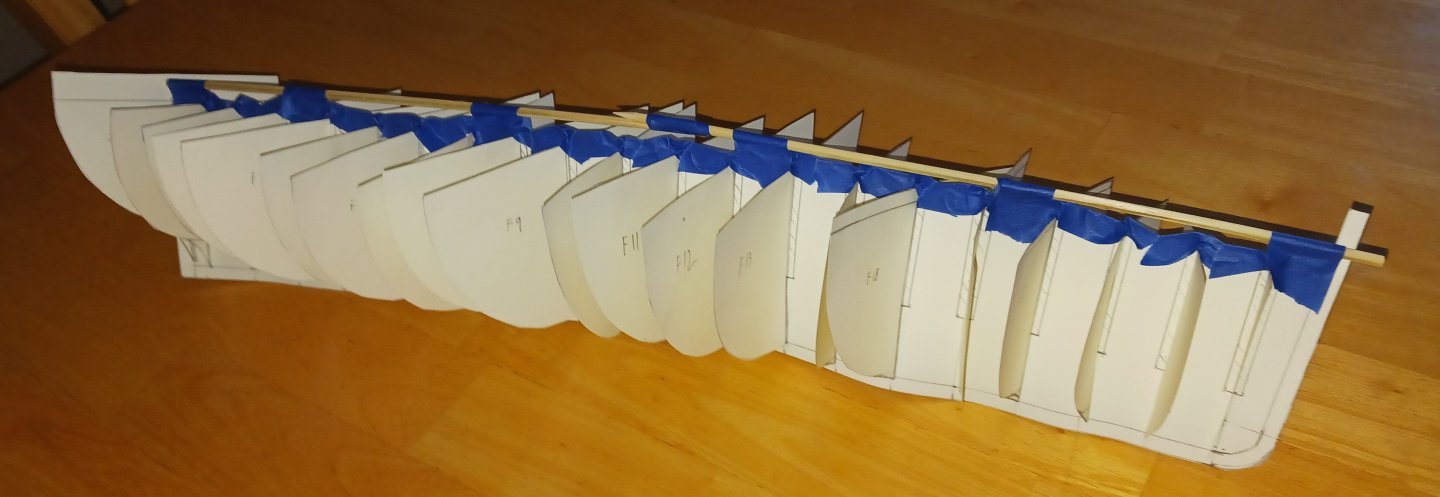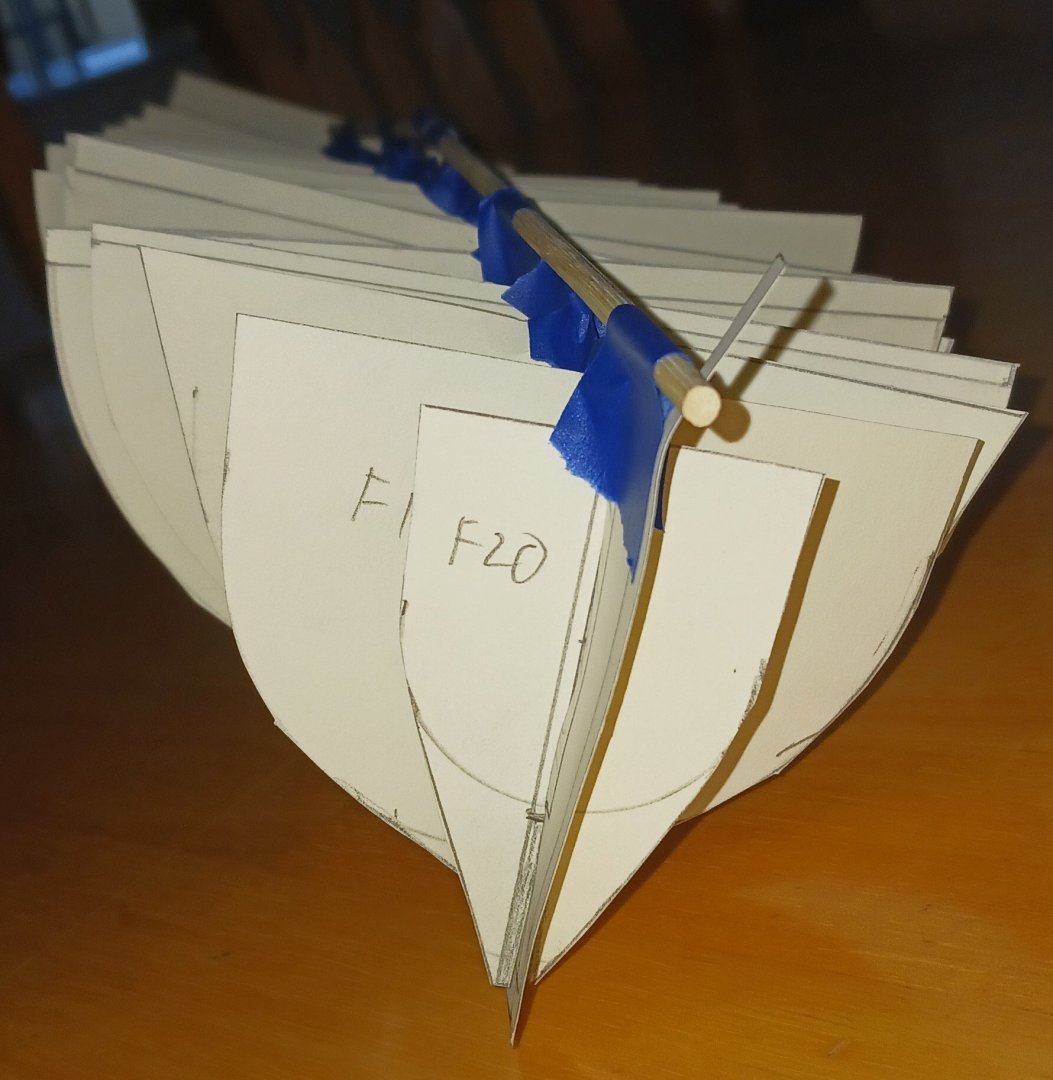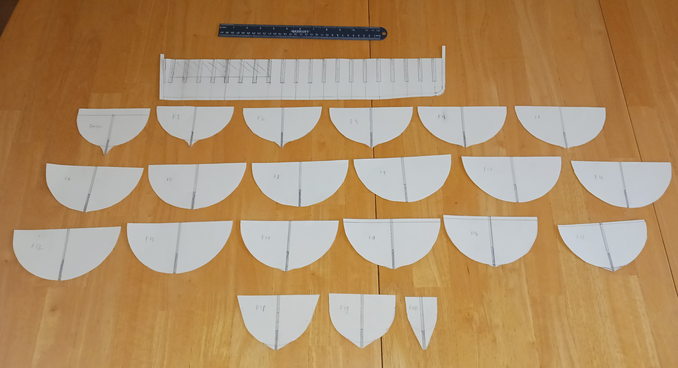-
Posts
1,389 -
Joined
-
Last visited
Content Type
Profiles
Forums
Gallery
Events
Everything posted by Ferrus Manus
-
When taking into account scale, you should always try to err on the side of things being too small. If it looks like it's out of scale, it's probably much too big. I work at the scales of 1/96 and 1/100, so I should know this. For example, here's a detail shot of my current project: I have a 1/96 scale figure from one of the kits I've done, and I check the sizes of all the pieces of equipment on deck against that figure. For example, the smaller maneuvering anchor is about half the size of a man (maybe 3 feet max) and the cat tackle device is about 8 feet tall at scale.
-
Great job starting on this project! I have done one myself. If you would like any kind of advice on construction, visit @kirill4 and try your best to make your model look like that. I look forward to seeing your progress!
- 69 replies
-
- spanish galleon
- Imai
-
(and 1 more)
Tagged with:
-
Kirill, this piece of work is exactly why I personally admire and look up to you. You have been a personal inspiration for me to do more research and attempt to build more accurate replicas. You, sir, are a legend among men.
- 228 replies
-
- spanish galleon
- lee
-
(and 1 more)
Tagged with:
-
I'm pretty sure he has an unfinished model of the clipper Donald McKay, but he might have gotten it done since I last checked.
- 3,560 replies
-
- clipper
- hull model
-
(and 2 more)
Tagged with:
-
Good job, Kirill! I couldn't wait to watch you start on this one.
- 30 replies
-
- Golden Hind
- Airfix
-
(and 1 more)
Tagged with:
-
First of all, this is one of the best reconstructions of the Nina I have ever seen. This is my reconstruction of a Medieval caravel: How did you build yours completely without power tools?
-
Would the stock have been made from wood or iron?
- 508 replies
-
Also remember how hard iron was to forge in the Middle Ages. If they didn't absolutely need it, they would have gone with wood. If I remember correctly, sliding stocks weren't seen until well into the 18th century. I would suspect anchor designs hadn't changed much from Roman times by that point, especially considering the fact that the aforementioned anchors were so time and labor intensive to make.
- 508 replies
-
The funny thing about this post right here is I just PM'ed you about late medieval anchors just now, before having read this post. Cheers!
- 508 replies
-
Isaiah, I sent you to a question log that should evolve into something that explains the blocks on the Sherbourne.
- 60 replies
-
- vanguard models
- cutter
-
(and 1 more)
Tagged with:
-
Thank you both for your answers. Now, how on earth would I replicate those nets at 1/100 scale?
-
I was actually referring Isaiah to your question, in hopes that he would learn more about the Sherbourne's blocks. He and I already had this discussion about blocks. I also referred him to the specific table used above. I was hoping he could glean some information from this topic.
-
Has anyone ever seen a picture of a working oyster smack? Specifically the equipment they use to haul up oysters? I swear I saw an image of an oyster smack hauling up some kind of net somewhere, some time.
-
@Isaiah you should check this out.
-
I usually end up painting windows the same color because in my opinion, yellow/white looks more realistic than blue. However, your execution looks great.
- 303 replies
-
- Sovereign of the Seas
- Airfix
-
(and 1 more)
Tagged with:
-
The way I paint lanterns is to paint the fields of the windows yellow with white centers, to give the illusion that they're illuminated with light from the inside. Awesome job on the lanterns!
- 303 replies
-
- Sovereign of the Seas
- Airfix
-
(and 1 more)
Tagged with:
-
Isaiah, that's what I meant to say in one of these messages. I am aware of Vanguard's good design, but that can't be replicated in a home shop without some kind of ludicrously expensive and massive CNC machine. Fun fact: paper is, in fact, a 3-dimensional object. If this isn't the worst mock up you've ever seen, stop lying to yourself. My main goal in doing this was to determine whether any of the frames were too wide, and they aren't. My precise measurements earlier in the build paid off. Now, I just have to disassemble this thing without ripping the paper.
-
That's what I figured. However, as the drawing paper doesn't want to behave, I have no real way to mock up the shape of the hull.
-
A band saw is probably the best (and fastest) tool for what I need to do. It's kind of hard to believe these paper cutouts you see here took me 2 months. I suspect the actual framing will be easier, because all I have to do is glue these to pieces of wood, cut them out, assemble them, and fair them down.
-
Today marks a major milestone in the build. I am DONE with the designs for the keel and frames. Designing the keel and frames has taken me more than two months, which is about the same amount of time I spend on most small models. The next step will be to cut everything out and test fit it together to get a good idea of what the boat's lines will end up looking like. I can guarantee the framing won't take nearly as long as the designs did, and I plan to have the framing done (framing, sanding, filler blocks) by the end of June, with the boat ready to be planked.
About us
Modelshipworld - Advancing Ship Modeling through Research
SSL Secured
Your security is important for us so this Website is SSL-Secured
NRG Mailing Address
Nautical Research Guild
237 South Lincoln Street
Westmont IL, 60559-1917
Model Ship World ® and the MSW logo are Registered Trademarks, and belong to the Nautical Research Guild (United States Patent and Trademark Office: No. 6,929,264 & No. 6,929,274, registered Dec. 20, 2022)
Helpful Links
About the NRG
If you enjoy building ship models that are historically accurate as well as beautiful, then The Nautical Research Guild (NRG) is just right for you.
The Guild is a non-profit educational organization whose mission is to “Advance Ship Modeling Through Research”. We provide support to our members in their efforts to raise the quality of their model ships.
The Nautical Research Guild has published our world-renowned quarterly magazine, The Nautical Research Journal, since 1955. The pages of the Journal are full of articles by accomplished ship modelers who show you how they create those exquisite details on their models, and by maritime historians who show you the correct details to build. The Journal is available in both print and digital editions. Go to the NRG web site (www.thenrg.org) to download a complimentary digital copy of the Journal. The NRG also publishes plan sets, books and compilations of back issues of the Journal and the former Ships in Scale and Model Ship Builder magazines.


